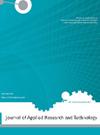利用深度学习从磁共振成像中检测进行性核上性麻痹并对其进行分类
Q3 Engineering
Journal of Applied Research and Technology
Pub Date : 2024-02-29
DOI:10.22201/icat.24486736e.2024.22.1.2228
引用次数: 0
摘要
对进行性核上性麻痹(PSP)的检测和分类需要一种及时可靠的基于磁共振图像的计算机辅助评估。这是一种神经退行性疾病,由于特征性症状高度重叠,临床上很难识别。与其他疾病不同,PSP 的主要制约因素是该领域的研究工作有限。我们研究的主要目的是通过比较传统的定制 CNN 和迁移学习模型(如 DenseNet121、ResNet50、InceptionV3、VGG16、EfficientNetB0、Xception、MobileNet 和 InceptionResNetV2),建立一个通用模型。现有的研究主要集中在降低神经网络的时间复杂性上,而且只在低级特征上取得了成功。此外,获取大量分布式标记数据也很困难。在我们的研究中,考虑了 125 张基于 T1 协议的高分辨率 MRI 图像,其中包括 65 名 PSP 患者和 60 名正常对照组患者。在将图像数据集部署到相应网络之前,对其进行了预处理、归一化和增强。结果表明,"InceptionResNetV2 "模型可被视为检测和分类 PSP 的通用模型。该网络提供了 95% 的分类准确率、100% 的精确率、92.8% 的灵敏度、96.2% 的 F1 分数和 100% 的特异性,与研究中考虑的其他模型以及现有的传统 ML 模型相比,显著提高了分类准确率,从而为重要诊断的实施提供了先决条件。本文章由计算机程序翻译,如有差异,请以英文原文为准。
Detection and classification of progressive supranuclear palsy from MRI images using deep learning
A timely and reliable computer aided MR image-based evaluations is required for the detection and classification of Progressive supranuclear palsy (PSP). It is a neurodegenerative ailment that is clinically very difficult to identify due to a high degree of overlap in characterized symptoms. Unlike other ailments, the primary constraint regarding PSP is the limited research work in this area. The main aim of our study is to establish a generalized model by comparing traditional custom CNN and transfer learning models such as DenseNet121, ResNet50, InceptionV3, VGG16, EfficientNetB0, Xception, MobileNet and InceptionResNetV2 which are fine tuned for the detection and classification of PSP with higher accuracy rates. Existing research has primarily focused on reducing the time complexity of neural networks and has only had success with low-level features. Furthermore, obtaining a significant volume of distributed labelled data is difficult. In our research, 125 T1 protocol based high resolution MRI images of 65 PSP and 60 normal control patients were considered. The image dataset is pre-processed, normalized and augmented before deploying them to the respective networks. The results propose that ‘InceptionResNetV2’ model can be considered as a generalised model for the detection and classification of PSP. The network offered a classification accuracy of 95%, Precision of 100%, Sensitivity of 92.8%, F1 score of 96.2% and a Specificity of 100% which is significantly higher compared to other models considered in the study and also the existing conventional ML models, thereby providing a prerequisite for significant diagnostic implementation.
求助全文
通过发布文献求助,成功后即可免费获取论文全文。
去求助
来源期刊

Journal of Applied Research and Technology
工程技术-工程:电子与电气
CiteScore
1.50
自引率
0.00%
发文量
0
审稿时长
6-12 weeks
期刊介绍:
The Journal of Applied Research and Technology (JART) is a bimonthly open access journal that publishes papers on innovative applications, development of new technologies and efficient solutions in engineering, computing and scientific research. JART publishes manuscripts describing original research, with significant results based on experimental, theoretical and numerical work.
The journal does not charge for submission, processing, publication of manuscripts or for color reproduction of photographs.
JART classifies research into the following main fields:
-Material Science:
Biomaterials, carbon, ceramics, composite, metals, polymers, thin films, functional materials and semiconductors.
-Computer Science:
Computer graphics and visualization, programming, human-computer interaction, neural networks, image processing and software engineering.
-Industrial Engineering:
Operations research, systems engineering, management science, complex systems and cybernetics applications and information technologies
-Electronic Engineering:
Solid-state physics, radio engineering, telecommunications, control systems, signal processing, power electronics, electronic devices and circuits and automation.
-Instrumentation engineering and science:
Measurement devices (pressure, temperature, flow, voltage, frequency etc.), precision engineering, medical devices, instrumentation for education (devices and software), sensor technology, mechatronics and robotics.
 求助内容:
求助内容: 应助结果提醒方式:
应助结果提醒方式:


